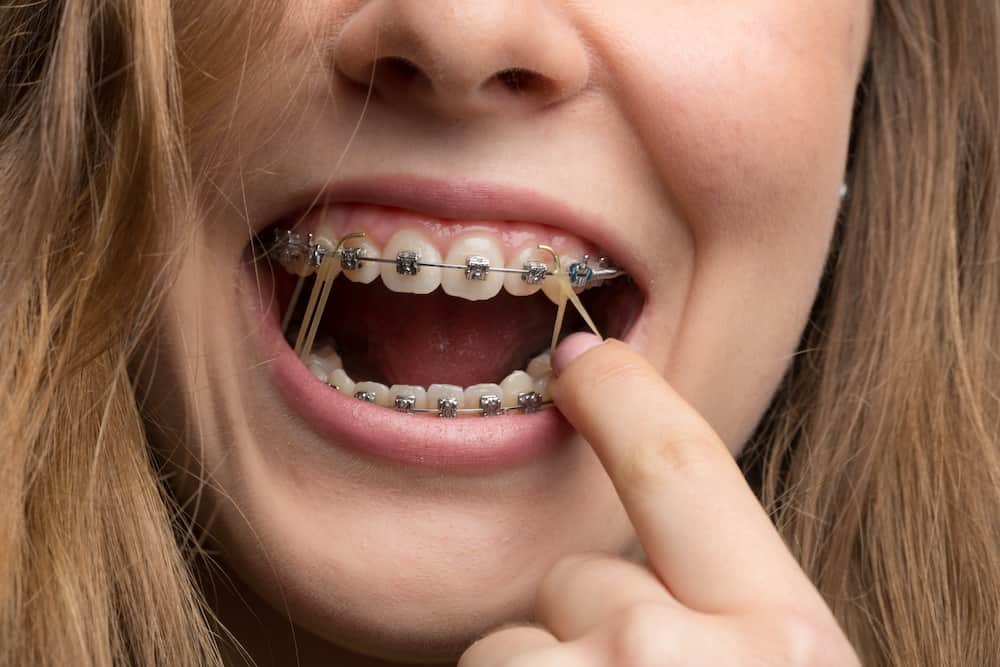The primary type of correction most people associate with orthodontics is straightening teeth. While this is the most visible change most of the time, orthodontic treatment can also fix misaligned bites, which is vital for having a healthy smile. Bite problems come in various forms, each of which can cause major issues with the appearance and overall health of your smile.
What is a healthy smile?
For the jaws to meet comfortably and result in the best-looking smile, the upper jaw should be decently bigger than the lower jaw. This means the upper jaw will rest a little outside the lower jaw without overlapping it. The upper jaw is also positioned further forward than the lower jaw to the point where the upper front teeth fit easily over the lower front teeth without entirely obscuring them.
While many people have teeth that bite down like this, many have jaws that don’t quite bite down correctly. Others experience more pronounced bite misalignments, which can lead to serious problems.
Symptoms of a Misaligned Bite
A key indicator as to whether or not a bite might be misaligned is if a person is experiencing jaw pain. Jaw pain can occur because the upper and lower teeth are not resting naturally against one another, causing strain in the jaw muscles. This can also lead to teeth grinding, also known as bruxism. Teeth grinding can create more jaw discomfort, affect the shape of the teeth, and even expose painful nerve endings.
Another symptom of a misaligned bite is gum recession. While receding gums can be caused by a few different factors, it can also result from a misaligned bite.
How to know if your bite is misaligned:
A misaligned bite can occur in a number of ways, all of which can interfere with you having a healthy and attractive smile. Some symptoms are easily observed based on how a person is able to close their mouth and what their jaws and teeth look like when they do. For example, an upper jaw that protrudes too far outward is often a sign of having an overbite, a form of misalignment. Another visible way to tell if a person has a misaligned bite is if a person’s lower jaw protrudes past the upper jaw—this is called an underbite.
During routine check-ups, a dentist might observe a misaligned bite or see it in an X-ray. Just because a misaligned bite isn’t visible to the untrained eye doesn’t mean it can’t wreak havoc on jaw, gum, and tooth health. Oftentimes, dentists are the first to diagnose misaligned bites and refer patients for orthodontic treatment. This is why it is so important to have regular dental check-ups and to bring your child to the dentist early on, when bite misalignments can be corrected more easily than later in life.
Overbites
While everyone should have somewhat of an overbite, the jaw shouldn’t be too forward. Overbites lead to jaw pain, teeth grinding, and difficulties speaking and eating.
People with this bite problem also tend to experience tooth decay as a result of not being able to fully close their mouths comfortably while breathing. This dries out the mouth, eliminating saliva, which helps prevent tooth decay.
Underbites
The opposite problem of underbites is also something to be taken seriously. An underbite can affect a person’s self-confidence and can cause oral health problems.. Underbites also lead to speaking and eating difficulties and often result in chronic jaw pain.
Crossbites
When the upper jaw ends up being too small, sometimes even being smaller than the lower jaw, it can result in a crossbite. This misalignment problem results in too much pressure being exerted on the teeth and can quickly wear the teeth down. People with crossbites also often report experiencing headaches and problems with speaking and eating.
Misaligned Bites and Gum Recession
A misaligned bite can cause excessive force when chewing. Misaligned teeth can also make gums prone to recession because teeth shift to a tilted-up position from uneven wear and tear. This position wears down the roots of the teeth and can affect the surrounding gum area. If gum recession progresses, it can become a serious dental issue, causing irreversible bone and tissue loss, and eventually the loss of the tooth itself.
How do you fix a misaligned bite?
Orthodontic treatment can take care of a wide range of bite misalignment problems. Crossbites, overbites, and underbites can all be addressed with early intervention at the age of seven, which is when kids have more malleable jaws.
Underbites and overbites can be treated with braces and Invisalign with the addition of elastic interarch bands, which pull the jaw into proper alignment. For most crossbites, the jaw will need to be resized, which takes a more intense procedure, often surgery, if it isn’t treated until the patient is a teen or adult. With early intervention, a palatal expander can be used to enlarge the top jaw so surgery won’t be needed later on.
If you want to learn more about how to fix bite misalignments along with other benefits of starting orthodontic treatment, contact Smith Orthodontics and schedule your free consultation today! The team at Smith Orthodontics is here to help you achieve your healthy smile today.






